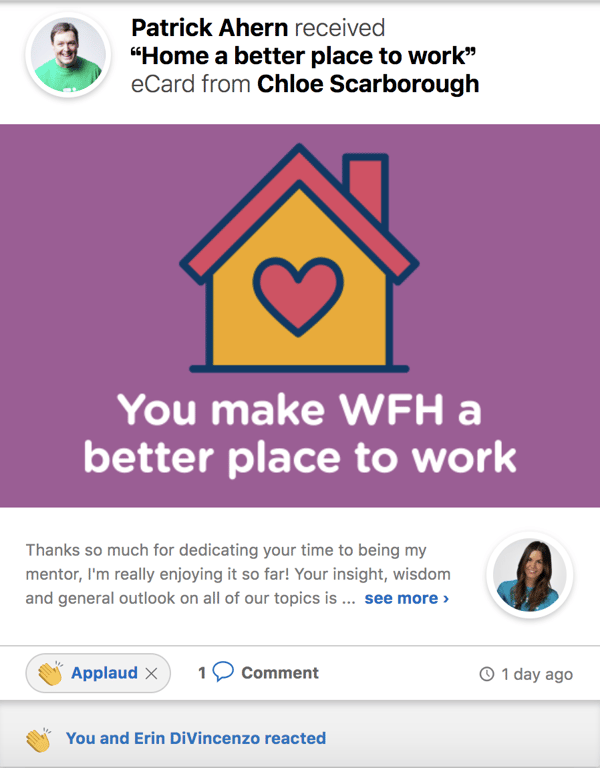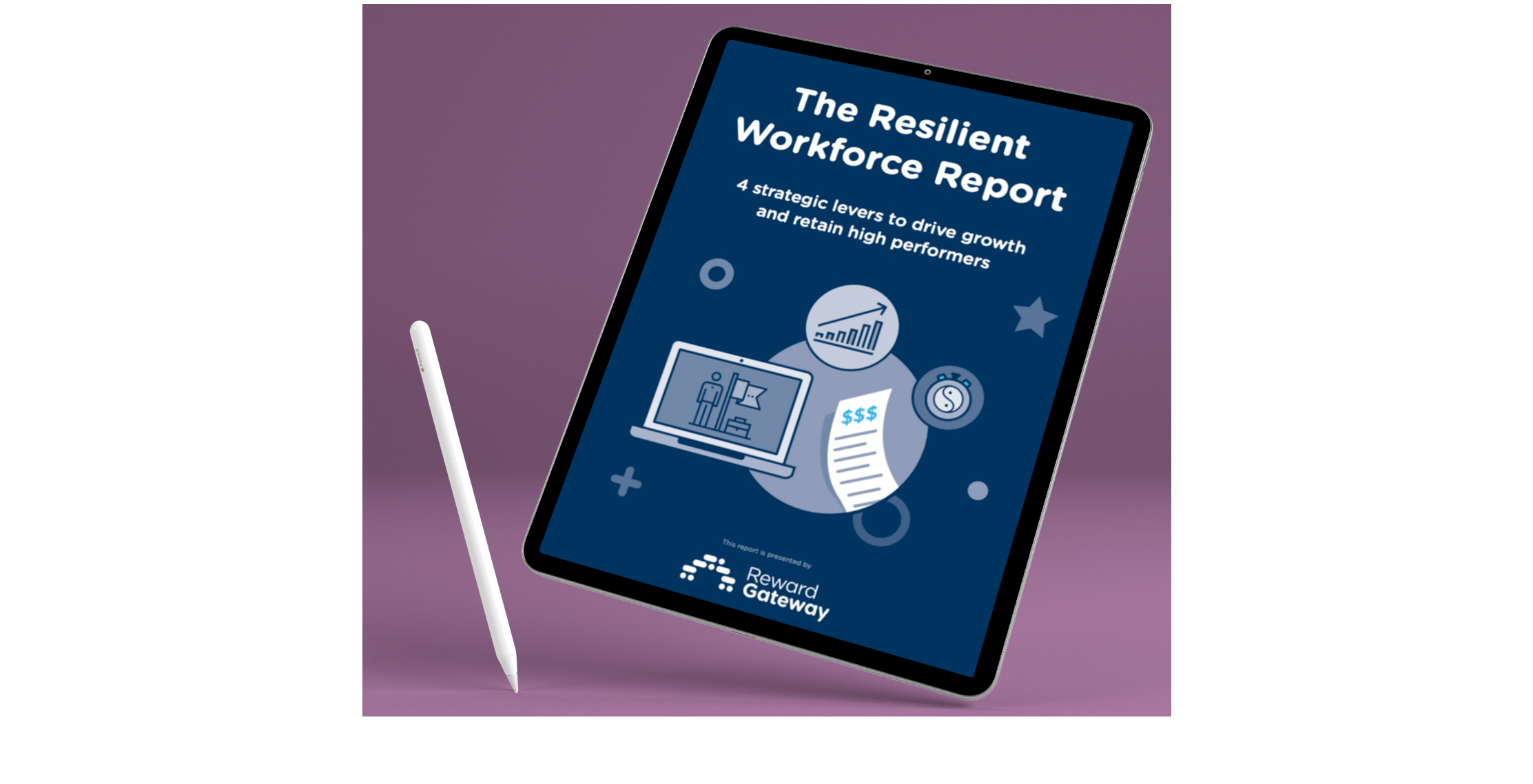The last few years have been chockablock full of uncertainty, change and stress, and the majority of employees have experienced a notable impact.
52% of American employees report feeling fatigued by all the change, and 31% have cited lasting effects on their wellbeing.
![]() What’s more, Great Place to Work reports that, in a survey of 14,000 people, only 1 in 6 U.S. employees (16%) is actually thriving at work. Consequently, our own research demonstrates that wellbeing support has risen to the top of employees’ “must-have benefits” – it was #7 in 2022 – checklist for prospective employers – and it’s not just physical wellbeing, it’s mental/emotional, social and financial, as well.
What’s more, Great Place to Work reports that, in a survey of 14,000 people, only 1 in 6 U.S. employees (16%) is actually thriving at work. Consequently, our own research demonstrates that wellbeing support has risen to the top of employees’ “must-have benefits” – it was #7 in 2022 – checklist for prospective employers – and it’s not just physical wellbeing, it’s mental/emotional, social and financial, as well.
Walk with us through the four main principles of employee wellbeing at work and learn how – and why – to prioritize wellbeing at your organization. And, for even more depth, strategy and statistics, download our Resilient Workforce Report today!
Principle 1: Support
 Support can come in a variety of ways from employers. It’s how employers show up for their people in the ways they need it most – when they need it most. The last few years of disruption have culminated in 35% of U.S. adults saying the economy is a major source of stress. Financial stress, coupled with new ways of working, means supporting employees across all areas of wellbeing is essential.
Support can come in a variety of ways from employers. It’s how employers show up for their people in the ways they need it most – when they need it most. The last few years of disruption have culminated in 35% of U.S. adults saying the economy is a major source of stress. Financial stress, coupled with new ways of working, means supporting employees across all areas of wellbeing is essential.
In a recent survey, about 4 in 5 employees across the U.S., the UK and Australia felt it was important that their employer offer financial (79%), physical (80%) and mental (84%) wellbeing resources and tools at work.
This is an opportunity for employers, where over half of HR leaders surveyed say that offering wellbeing, particularly financial wellbeing, is more important now than at the start of 2020.
A commonly used strategy to support employees is to make physical, mental and financial wellbeing resources available to staff. Offering simple access to these services by facilitating training and encouraging usage is fundamental and demonstrates an organization’s belief in creating a culture of wellbeing.
Principle 2: Connection
 Our survey showed 1 in 5 people in the U.S. felt that the last few years have had lasting negative effects, leaving them feeling further disconnected from teammates and co-workers. Here are a few ideas to get started:
Our survey showed 1 in 5 people in the U.S. felt that the last few years have had lasting negative effects, leaving them feeling further disconnected from teammates and co-workers. Here are a few ideas to get started:
- Cultivate employee-manager connections: Nothing beats regular one-on-one meetings with employees, at a time set aside for the purpose, to hear how they are really doing. Share non-work stories to lighten the mood of tactical one-on-ones.
- Enable peer-to-peer connections: To launch meetings, consider quick and light ice breakers like a casual chat, a 1-minute meditation, or sharing something like your top success and challenge of the week.
People with high belonging scores – those who feel they belong – are far more likely to be engaged and loyal and to promote their organizations as good places to work.
Principle 3: Communication
84% of U.S. employees stated that feeling listened to by leadership was important to their wellbeing.
How often and how openly leaders share and solicit feedback plays a large role in employees’ overall wellbeing. Surprisingly, while you may feel your company is doing enough through your internal comms, employees often feel they lack information and the opportunity to provide input. 75% of HR managers indicated that they felt their company was doing enough to connect employees to leadership, but only 54% of employees felt the same. This shows a sizable gap between what leaders think they’re doing and how employees feel about it. To close the gap, employers can:
Strengthen internal communications from leadership
 During the pandemic, senior leaders in some companies created blogs or videos to keep employees up to date on company news and changes in the workplace. Filling gaps in understanding was critical during the near-constant change of those years when face-to-face was simply unattainable. As things evolved, leaders who put their people first made the time to check in with employees, deliver surveys to gather thoughts, feelings and feedback, then address results together. Embracing the virtual connections first formed by the pandemic has become critical to building trust and connection in the employee-employer relationship.
During the pandemic, senior leaders in some companies created blogs or videos to keep employees up to date on company news and changes in the workplace. Filling gaps in understanding was critical during the near-constant change of those years when face-to-face was simply unattainable. As things evolved, leaders who put their people first made the time to check in with employees, deliver surveys to gather thoughts, feelings and feedback, then address results together. Embracing the virtual connections first formed by the pandemic has become critical to building trust and connection in the employee-employer relationship.
Encourage dialogue with employees
The most engaging and effective form of communication isn’t just a one-way informational pipeline from leaders to employees. As leaders, it’s important to be as transparent as possible to reduce the fear caused by the unknown. When everyone knows what’s going on, many minds can talk through and brainstorm decisions and improvements. For employees, being seen and heard in this way is wellbeing gold.
Principle 4: Recognition
 Reward and recognition have a surprisingly powerful effect on employee energy, engagement and resilience. People need and want to be recognized. In Reward Gateway’s 2022 survey of employees across the U.S., the UK and Australia, more than 4 in 5 employees said that receiving rewards for their efforts is important for wellbeing, and that it’s important for employers to facilitate recognition between peers and managers. A full 40% of employees said they would leave a job that didn’t offer rewards and recognition for their efforts. So what’s the best way to approach this robust wellbeing prescription?
Reward and recognition have a surprisingly powerful effect on employee energy, engagement and resilience. People need and want to be recognized. In Reward Gateway’s 2022 survey of employees across the U.S., the UK and Australia, more than 4 in 5 employees said that receiving rewards for their efforts is important for wellbeing, and that it’s important for employers to facilitate recognition between peers and managers. A full 40% of employees said they would leave a job that didn’t offer rewards and recognition for their efforts. So what’s the best way to approach this robust wellbeing prescription?
Reward success
What’s the psychology behind rewards? The chemical changes produced by high stress environments make us focus on what’s not working, and that negative focus is a downward spiral. Strategic reward and recognition, on the other hand, produce the feeling that we’re making progress. And, just as importantly, it helps individuals see and appreciate what others are doing well. With the focus on our success, serotonin and dopamine are released, improving mood and wellbeing, and helping us acclimate to change, creating a more resilient workforce.
Elevate work to its higher purpose
It’s nice to recognize someone for doing something for you. But the deeper purpose of recognition is to connect “that thing we did last Tuesday” to our organization’s higher values and purpose. The Action-Value-Impact framework helps show how bright new ideas, or even everyday efforts, can be incredibly strategic to company success. It also shows senior leadership how powerful reward and recognition is in reinforcing the behaviors that propel the organization forward.
 Responding to the four wellbeing principles can help organizations solve an important challenge for their people and their business. These efforts can help with immediate challenges like productivity, attracting and retaining top talent, and helping employees overcome the rising cost of living. The availability of technology to improve wellbeing makes it easier to find new ways to enable, encourage and make these efforts consistently effective across your business.
Responding to the four wellbeing principles can help organizations solve an important challenge for their people and their business. These efforts can help with immediate challenges like productivity, attracting and retaining top talent, and helping employees overcome the rising cost of living. The availability of technology to improve wellbeing makes it easier to find new ways to enable, encourage and make these efforts consistently effective across your business.
A culture that authentically values and enables wellbeing fuels a healthier workplace. And this gives employers a greater chance of keeping their best people, standing out in today’s candidate market, and fulfilling their business vision.
Subscribe to our blog today to continue getting expert advice and HR thought leadership to your inbox every week.

 Anthony Knierim
Anthony Knierim


